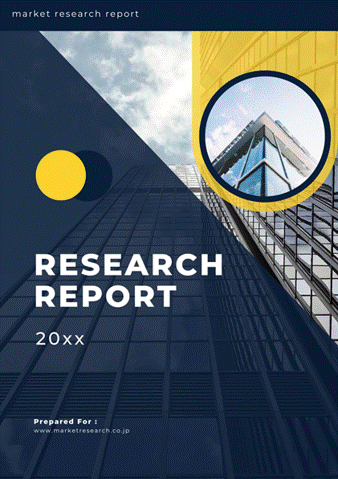 | • レポートコード:D-MOR01069 • 出版社/出版日:Mordor Intelligence / 2019年12月26日 • レポート形態:英文、PDF、100ページ • 納品方法:Eメール(受注後2-3営業日) • 産業分類:医療 |
| Single User | ¥629,000 (USD4,250) | ▷ お問い合わせ |
| Multi User | ¥703,000 (USD4,750) | ▷ お問い合わせ |
| Global Site License | ¥1,110,000 (USD7,500) | ▷ お問い合わせ |
• お支払方法:銀行振込(納品後、ご請求書送付)
レポート概要
| 本調査レポートは抗毒素体市場について総合的に分析し、イントロダクション、調査手法、エグゼクティブサマリー、市場動向、種類別(スネーク、スコーピオン、スパイダー、その他)分析、抗毒タイプ別(多価抗毒素体、一価のアンチ毒、その他)分析、地域別(北米、ヨーロッパ、アジア太平洋、中東およびアフリカ、南米)分析、競争状況、市場機会および将来動向に区分して収録しています。 ・イントロダクション ・調査手法 ・エグゼクティブサマリー ・市場動向 ・抗毒素体の世界市場:種類別(スネーク、スコーピオン、スパイダー、その他) ・抗毒素体の世界市場:抗毒タイプ別(多価抗毒素体、一価のアンチ毒、その他) ・抗毒素体の世界市場:地域別(北米、ヨーロッパ、アジア太平洋、中東およびアフリカ、南米) ・競争状況 ・市場機会および将来動向 |
Anti-venom Market – Growth, Trends, and Forecast (2019 – 2024)
Market Overview
The anti-venom market is expected to register a CAGR of nearly 4.7% during the forecast period, 2019-2024.
Snakebite is a neglected public health issue in many tropical and subtropical countries. About 5 million snake bites occur each year, resulting in up to 2.5 million envenoming’s (poisoning from snake bites) and at least 100,000 deaths, and around three times as many amputations and other permanent disabilities.
Due to the involvement of international health organizations in producing safe and effective anti-venoms, people are aware of the anti-venom drugs.
Anti-venom production is difficult and expensive. The cost of several anti-venoms has increased dramatically over the last two decades, making treatment unaffordable for most of the people who are in need of it.
Inappropriate procurement and medicine distribution strategies in few countries contribute to manufacturers ceasing the production of anti-venom or increasing the prices of anti-venom.
Scope of the Report
Antivenom (or antivenin or antivenene) is a biological product used to treat venomous bites or stings. Antivenom is created by extracting venom from the relevant species of animal, which includes snakes, spiders, insects, fish, etc. The market is segmented by species and antivenom type. The species considered are snakes, scorpion, spiders, etc. The other species segment includes bees, marine animals, such as fish, jellyfish, and insects. The types considered are polyvalent heterologous, monovalent heterologous, homologous, and small molecule anti-toxins.
Key Market Trends
Polyvalent Antivenoms Segment is Poised to Register Robust Growth.
Polyvalent antivenoms comprise particular antibodies that are capable of counteracting a number of homologous venoms from various species/genera. Polyvalent antivenoms can save lives of victims of snake envenomation, even when the culprit snake is unknown, most usual case, about 80% of all the time, and when a monovalent antivenom can not be chosen.They are beneficial in regions where there is a presence of large number of venomous species and when it is difficult to produce monovalent antivenoms against all of them. It is now possible to formulate polyvalent antivenoms with high potencies analogous to those of the equivalent monovalent antivenoms. With good manufacturing processes, these antivenoms have been shown to cause few and minor adverse reactions. Moreover, polyvalent antivenoms demonstrated a wide range of Para specific neutralization of poisons from different species/genera, even from distant geographic areas. Lastly, it is less expensive and easier to produce and handle.
The United States is Expected to Retain Largest Market Share During the Forecast Period
Geographically, North America holds the largest market share with respect to demand and revenue. In the United States, every state, except Maine, Alaska, and Hawaii, is home to at least one of the 20 venomous snake species. Up to 95% of all snakebite-related deaths in the United States are attributed to the western and eastern diamondback rattlesnakes. Furthermore, the majority of bites in the United States occur in the south-western part of the country, as the rattlesnake population in the eastern states are much lower. The United States contributes a major share to the anti-venom market, due to the establishment of snake poison control centers, increase in antivenom products, and rise in clinical trial conducting firms for anti-venom products, and established healthcare facilities in the region.
Competitive Landscape
Several developing countries with established biotechnological facilities have local scientific expertise, which creates favorable conditions to establish local antivenom manufacturing practices. Countries, such as Brazil, Costa Rica, Egypt, France, India, Mexico, South Africa, and Thailand, have large, well-established anti-venom manufacturers. Many companies from Costa Rica to Spain to India are developing new techniques to produce economically and medically promising African polyvalent anti-venoms.
Reasons to Purchase this report:
The market estimate (ME) sheet in Excel format
Report customization as per the client’s requirements
3 months of analyst support
1 INTRODUCTION
1.1 Study Deliverables
1.2 Study Assumptions
1.3 Scope of the Study
2 RESEARCH METHODOLOGY
3 EXECUTIVE SUMMARY
4 MARKET DYNAMICS
4.1 Market Overview
4.2 Market Drivers
4.2.1 Increasing Awareness on Antivenoms Available
4.2.2 Technological Advancements
4.3 Market Restraints
4.3.1 Complexities Involved in The Preparation of the Correct Immunogens
4.3.2 Lack of Regulatory Capacity for the Control of Antivenoms in Countries
4.4 Porter’s Five Force Analysis
4.4.1 Threat of New Entrants
4.4.2 Bargaining Power of Buyers/Consumers
4.4.3 Bargaining Power of Suppliers
4.4.4 Threat of Substitute Products
4.4.5 Intensity of Competitive Rivalry
5 MARKET SEGMENTATION
5.1 By Species
5.1.1 Snake
5.1.2 Scorpion
5.1.3 Spiders
5.1.4 Other Species
5.2 By Antivenom Type
5.2.1 Polyvalent Antivenoms
5.2.2 Monovalent Antivenoms
5.2.3 Others
5.3 Geography
5.3.1 North America
5.3.1.1 United States
5.3.1.2 Canada
5.3.1.3 Mexico
5.3.2 Europe
5.3.2.1 Germany
5.3.2.2 United Kingdom
5.3.2.3 France
5.3.2.4 Italy
5.3.2.5 Spain
5.3.2.6 Rest of Europe
5.3.3 Asia-Pacific
5.3.3.1 China
5.3.3.2 Japan
5.3.3.3 India
5.3.3.4 Australia
5.3.3.5 South Korea
5.3.3.6 Rest of Asia-Pacific
5.3.4 Middle East & Africa
5.3.4.1 GCC
5.3.4.2 South Africa
5.3.4.3 Rest of Middle East & Africa
5.3.5 South America
5.3.5.1 Brazil
5.3.5.2 Argentina
5.3.5.3 Rest of South America
6 COMPETITIVE LANDSCAPE
6.1 Company Profiles
6.1.1 Pfizer Inc.
6.1.2 Laboratorios Silanes (Bioclon Institute)
6.1.3 CSL Limited
6.1.4 BTG PLC
6.1.5 Merck & Co.
6.1.6 Merck KGaA (Sigma Aldrich)
6.1.7 Flynn Pharma (Micropharm)
6.1.8 Boehringer Ingelheim
7 MARKET OPPORTUNITIES AND FUTURE TRENDS